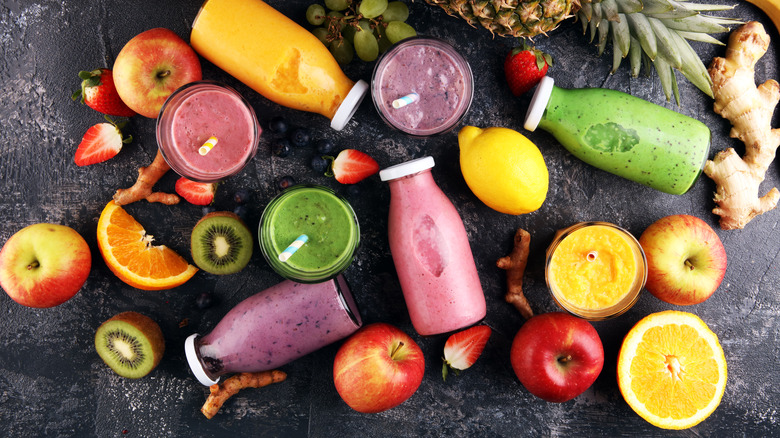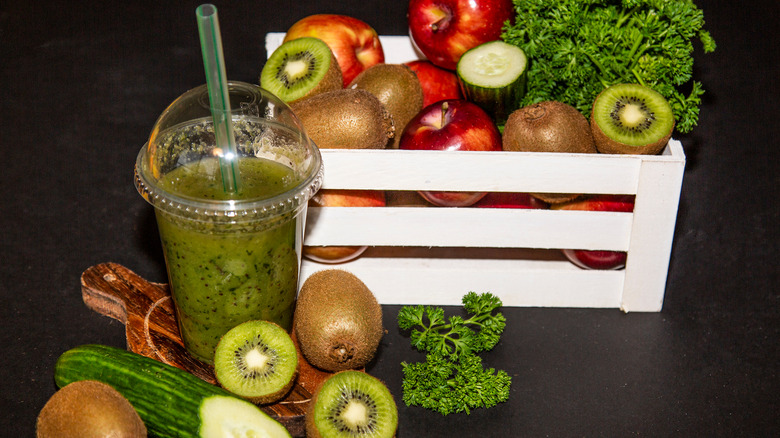Are Fruit Smoothies Really As Nutritious As You Think?
Smoothie bars have paved their way into consumer culture in recent decades, viewed as the healthy choice in food courts and increasingly an option to order after a workout in fitness centers. It's fruit in a liquid format, so shouldn't it be inherently healthy? Unfortunately, not all are created equal, and a strawberry ice cream smoothie simply doesn't stack up if you're looking for a nutritious option.
Besides the wide range of ingredients that are packed into the average blended beverage, some of which can tack on calories and sugar, portion size is an important thing to consider, according to registered dietitian Suzanne Fisher (via Delish). When fruit is blended, it reduces to a smaller size without being super noticeable. So while you might not eat two bananas, a scoop of yogurt, two spoonfuls of peanut butter, a cup of strawberries, and a tablespoon of honey in one sitting, these components can easily make their way into one single serving smoothie that you guzzle down in ten minutes. And that can be problematic.
Consequently, a 2007 study in the International Journal of Obesity and another one in 2009 in the journal Appetite, both demonstrated that daily calorie consumption was higher for those that ingested liquid forms of nutrients compared to solids.
Dietary habits should be taken into consideration before adding in smoothies
It's important to look at smoothies in the overall context of someone's nutrition habits. For people that don't eat fruit regularly, as one example, adding a balanced smoothie to their diet could help provide those nutrients they are missing. Fruit on its own has plenty of antioxidants, vitamins, and minerals that may help reduce inflammation and protect against certain diseases. Add vegetables to the mix, and these nutrients are amplified.
However, when fruit is mixed with extra sugar, the nutrient density is decreased and the added sucrose can lead to health complications over time including diabetes. Registered Dietitian Suzanne Fisher adds that blending fruit also results in reduced fiber as the fruit's skin and fleshy insides are broken down, and fiber is an important nutrient all humans need. Insider suggests that more research needs to be conducted to understand the distinction in how both soluble and insoluble fiber are digested once they are blended.
What should you include to make a smoothie healthy?
Registered Dietician Miranda Hammer tells Time that a smoothie can be healthy if it contains adequate amounts of fruits, vegetables, protein, and fat. The reason being that incorporating all of these nutrients will prevent huge rises in blood sugar and will help keep you full and prevent eating something right after you have the smoothie.
Some of the ingredients Hammer suggests to add to the mix include nut butters, nut milks, seeds, coconut, and yogurt. She also advises to include a handful of leafy greens for a boost in fiber, calcium, vitamins A, C, and K, and numerous valuable phytonutrients. You can also add silken tofu or oats for greater nutritional density. Protein powders and other supplements are great, too.
If you want to be certain that your smoothie is supporting a healthy lifestyle, your best option is to monitor what goes into it by making your own rather than buying from a restaurant or café since those could be packed with sugar, fruit juices, more sweetener, and limited whole ingredients.


